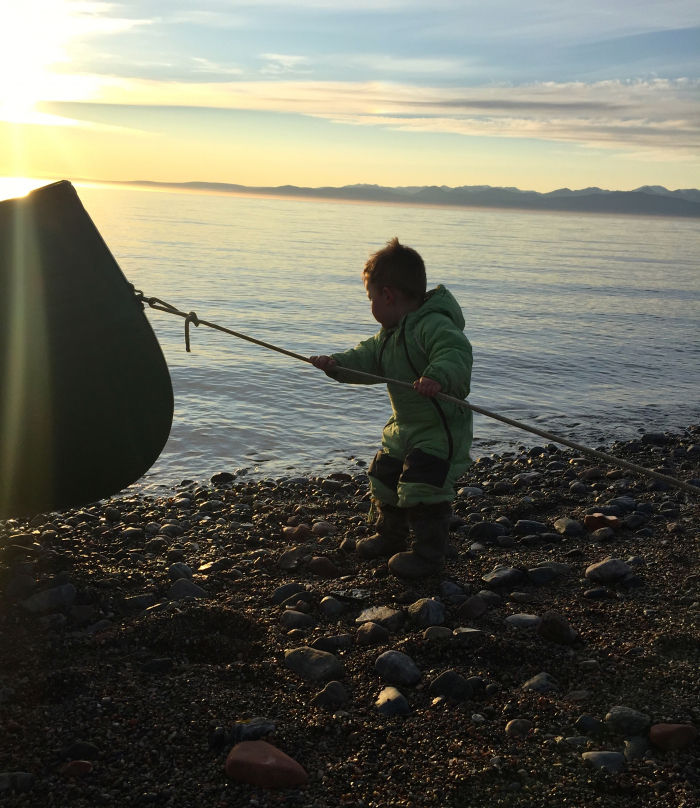One of the most beautiful things I enjoyed doing during my 2015 "Narwhal" expedition in Pond Inlet, was to take pictures from the view outside our basecamp. Since the sun doesn't set in the Arctic during the summertime, sleep is reduced to a couple of hours. The energy of the sun also seems to power you up and that is why I could be seen roaming around outdoors with my camera in "snap ready" mode at odd times.
This time of the day makes for some impressive sunlight and I was able to take many gorgeous pictures of the environment we are currently staying. Some of them even made it in the "Narwhal, revealing an Arctic Legend" exhibit that the Smithsonian Institution for Natural History presented to their millions of curious visitors.
A first photograph shows a young Inuit boy trying to help out the Narwhal team! He was running around the entire time and that didn't make it easy for a photographer to snap a good portrait. Only when he was able to help out the "big boys" was I able to get an impression that represent life as an Inuit boy.
 The best sunlight for pictures!
The best sunlight for pictures!
A second picture taken during a tea break after some boating, shows the vegetation that one can observe during the month of August, at least in the summer of 2015, during my first Narwhal expedition that is!
A nice contrast to share is the third added picture taken by George Hademenos during his 2017 expedition from the Minna Bluff Automatic Weather Station (AWS) just outside of the McMurdo Station, since this is Antarctica.
I can be more than certain that for my third "Narwhal" expedition this summer of 2020, under the leadership of Dr. Martin Nweeia, we will only have sun to enjoy: wait and see!


Comments
Add new comment